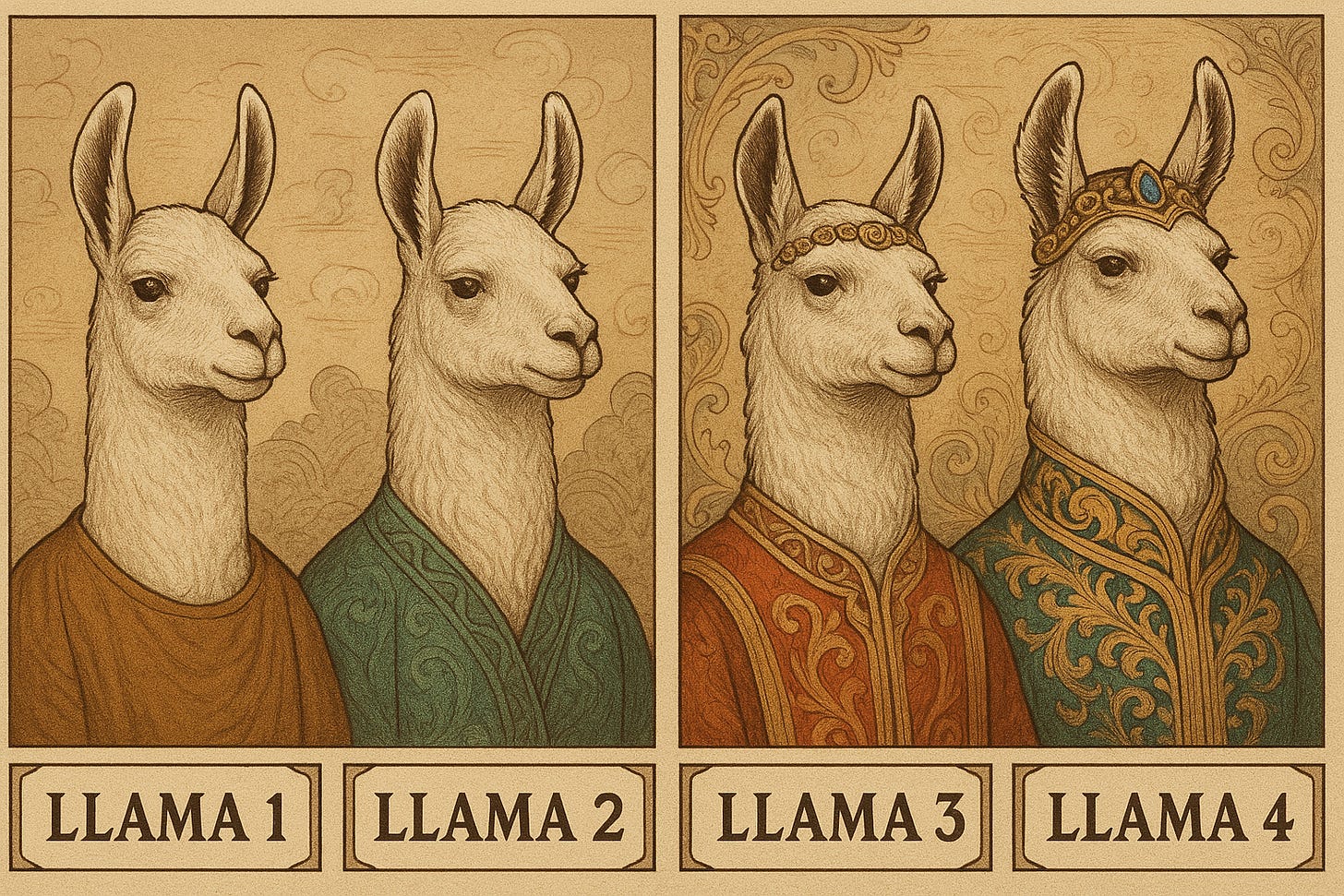Llama 4 Is a Context Monster—Just Don’t Ask It to Think (Yet)
Larger context, native support for multimodality, but no reasoning versions yet
tl;dr Meta's Llama 4 represents an evolutionary (not revolutionary) step forward in LLM development. Its move to a mixture of experts architecture and more native support for multimodal capabilities follow a well-trodden path. A context size ranging from 1M to 10M is probably the item that will grab the most attention, along with the fact that a reasoning model hasn't been released yet. The observed diminishing returns from scaling pre-training continues to highlight the need for new approaches to achieve substantial performance gains.
Here are some early observations for what it means for users:
1. Expanded Context Windows
Llama 4 models boast context windows ranging from 1 million to 10 million tokens, an 8x to 80x increase over previous models. This expansion, combined with its Needle in Haystack performance, allows entire codebases or large sets of documents to be processed in a single pass, reducing the need for complex retrieval-augmented generation (RAG) systems which have to deal with the chunking problem.
2. Multimodal Capabilities
The models support multimodal processing more natively with an early-fusion approach, enabling the integration of text, images, and audio. This positions Llama 4 competitively against other models, enabling applications that require simultaneous processing of diverse formats, though actual performance still remains to be seen.
3. Diminishing Returns in Base Model Scaling
Llama 4 confirms the trend already seen with other SOTA models - achieving substantial performance gains solely through scaling data and compute resources doesn’t seem possible anymore. Despite massive increase in parameters and training data, it demonstrated only modest improvements over its predecessors, confirming the need to find innovations beyond traditional scaling methods (RL-based test time training seems to be the one almost everyone’s betting on). Interestingly this generation’s largest model, Behemoth, which hasn’t yet been released for general use yet, continues to be trained and forms the basis for the smaller Maverick and Scout models.
4. Absence of a Dedicated Reasoning Model
While Llama 4 introduces newer/better models like Scout and Maverick, it does not include a dedicated reasoning model. But, I would expect Meta to release a reasoning model (just like everyone else!) later this year.


